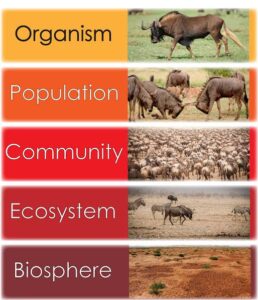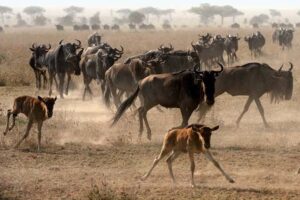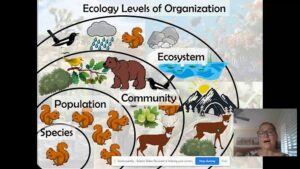Back to: Environmental Biology 100 Level
Welcome to class!
Hello amazing learner! It’s great to see you again, ready to learn something new and exciting. Today, our topic is Population Ecology, a very important aspect of Environmental Biology that helps us understand how living things interact in groups within their environment. Let’s get started!
Population Ecology
Imagine a busy market in Lagos filled with people, sellers, and goods. That crowd represents a population of humans in one location. In nature, animals, plants, and microorganisms also exist in populations. Studying how these populations live, grow, and interact is what population ecology is all about.

What is Population Ecology?
Population ecology is the study of how populations of living organisms interact with their environment and how their numbers change over time. A population refers to a group of individuals of the same species living in a specific area at the same time.
For example, all the fish in River Niger make up a population of that species in that river.
Characteristics of a Population
Every population has certain features that scientists study:
Population Size: The total number of individuals in a population. For example, the number of goats in a Fulani village.
Population Density: The number of individuals per unit area. If 200 yam plants are grown in a one-hectare farm, that’s the population density.
Population Distribution: How individuals are spread out in an area (clumped, uniform, or random). For example, trees in a forest may be clumped around water sources.

Age Structure: The proportion of young, mature, and old individuals in a population.
Sex Ratio: The number of males compared to females in a population.
Factors Affecting Population Size
Several factors can increase or decrease population size:
Birth Rate: The number of new individuals born.
Death Rate: The number of individuals that die.
Immigration: Individuals moving into a population.
Emigration: Individuals leaving a population.
Population Growth Patterns
Exponential Growth: When resources are abundant, populations grow very fast, like algae blooming in a river.
Logistic Growth: Growth slows down when resources become limited, forming an S-shaped curve.
Population Regulation
Populations cannot grow forever. They are controlled by:
Limiting Factors: Things like food, water, space, and diseases.
Carrying Capacity: The maximum number of individuals an environment can support without being damaged. For example, a small pond can only support a certain number of fish.
Importance of Population Ecology
Helps in wildlife conservation.

Aids in planning for food and resources.
Helps manage environmental problems like overpopulation or extinction.
Summary
Population ecology is the study of how populations of living things interact with their environment and change over time. It looks at characteristics like size, density, distribution, and growth. Population growth is influenced by births, deaths, immigration, and emigration, and regulated by limiting factors and carrying capacity.
Evaluation
- What is a population in ecology?
- Mention three characteristics of a population.
- What is carrying capacity?
You’ve done a fantastic job today! Understanding population ecology helps us manage our resources and environment better. Keep going with Afrilearn—you’re building knowledge that matters. See you in the next class!
